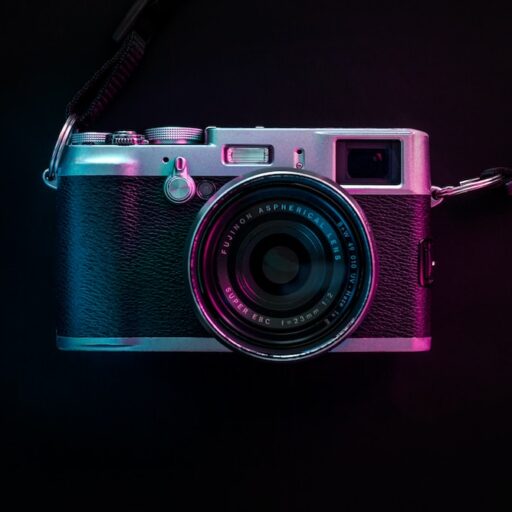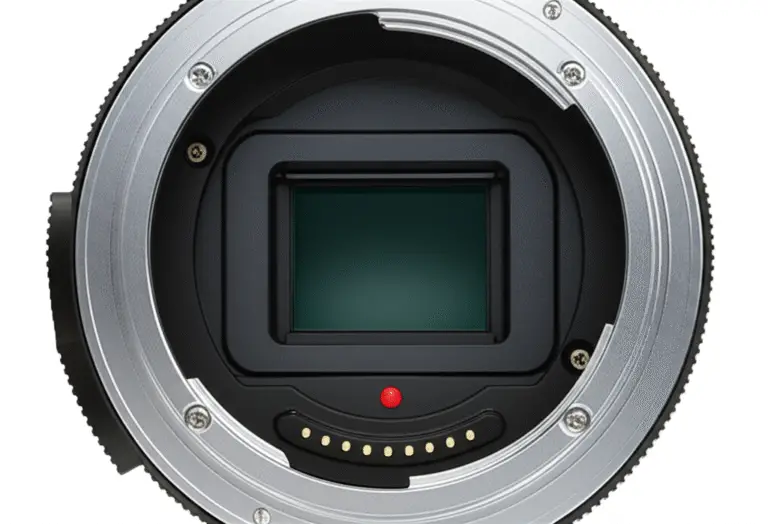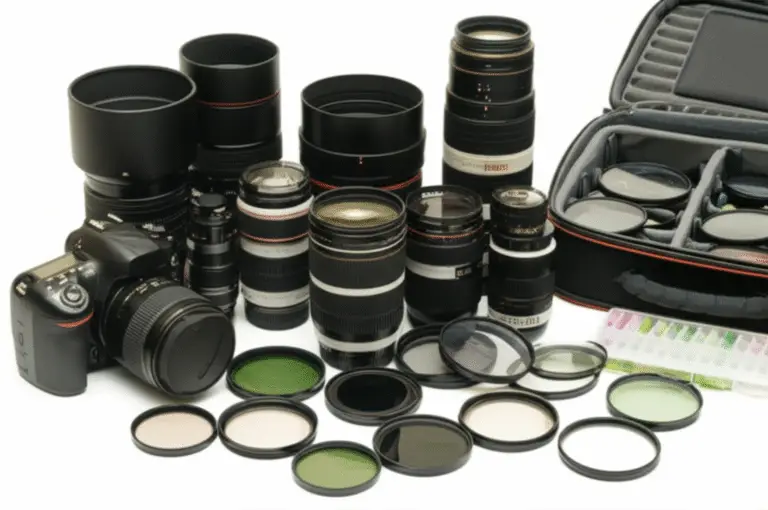Support our educational content for free when you purchase through links on our site. Learn more
7 Medium Format Camera Systems That Will Transform Your Studio (2025) 📸
If you’ve ever wondered why medium format cameras have a near-mythical status among studio photographers, you’re in for a treat. These beasts of image quality deliver jaw-dropping resolution, stunning dynamic range, and color depth that can make even the most mundane subject look like a masterpiece. But with so many options—from the ultra-premium Phase One XF IQ4 to the surprisingly versatile Fujifilm GFX 100 II—how do you choose the right system for your studio?
In this comprehensive guide, we’ll unpack 7 top medium format camera systems that are revolutionizing studio photography in 2025. We’ll dive into sensor tech, lenses, workflows, and real-world applications, plus share insider tips from our seasoned Camera Brands™ team. Curious about which camera offers the best balance of portability and power? Or how to avoid the common pitfalls that trip up even pros? Stick around — the answers are coming up!
Key Takeaways
- Medium format cameras deliver unmatched image quality with larger sensors offering superior resolution, dynamic range, and color fidelity.
- The Phase One XF IQ4 150MP remains the gold standard for ultra-high-end commercial studios, while the Fujifilm GFX 100 II offers a portable, mirrorless alternative without compromising quality.
- Lens choice is critical: prime lenses dominate for sharpness and aperture, but zooms and tilt-shifts have their place in specialized studio work.
- Tethering and workflow optimization with software like Capture One Pro are essential for seamless studio operations.
- Investing in medium format gear requires planning for larger file sizes, powerful workstations, and ample storage.
- Our expert team shares personal stories and practical advice to help you avoid pitfalls and maximize your medium format investment.
Ready to elevate your studio photography to the next level? Let’s explore the medium format systems that will make your images truly stand out in 2025 and beyond.
Table of Contents
- ⚡️ Quick Tips and Facts: Your Medium Format Studio Cheat Sheet
- 🕰️ The Grand Legacy: A Brief History of Medium Format in Studio Photography
- ✨ Why Go Big? The Irresistible Allure of Medium Format for Studio Work
- 📸 Decoding the Medium Format Landscape: Key Systems for Studio Photographers
- 🛠️ Beyond the Camera Body: Essential Components of a Medium Format Studio Setup
- 🔭 Lenses: The Eyes of Your Medium Format System
- 🧠 Digital Backs: The Brains and Brawn of Modular Medium Format Systems
- 🔗 Tethering Software and Workflow: Seamless Studio Integration
- 💡 Studio Lighting: Illuminating Your Medium Format Masterpiece
- 💻 Workstations and Storage: Handling Those Massive Medium Format Files
- 🧰 Accessories: Tripods, Cables, and Calibration Tools for Medium Format
- 🚀 Mastering the Medium Format Workflow: Tips for Studio Success
- 💰 The Investment: Understanding Costs and Value in Medium Format Photography
- ⚠️ Common Pitfalls and How to Avoid Them with Medium Format
- 🌟 Real-World Applications: Where Medium Format Shines in the Studio
- 💎 High-End Product Photography: Capturing Every Detail
- 👗 Fashion and Editorial Shoots: The Ultimate in Image Quality
- 🖼️ Fine Art Portraiture: Crafting Masterpieces with Depth and Detail
- 🏛️ Architectural and Interior Photography: Precision and Perspective
- 📜 Cultural Heritage and Archival Work: Preserving History in High Resolution
- 🗣️ Expert Insights: Our Team’s Personal Medium Format Stories
- 🔮 The Future of Medium Format: Trends and Innovations to Watch
- ✅ Conclusion: Is Medium Format Right for Your Studio?
- 📚 Recommended Links: Dive Deeper!
- 🔗 Reference Links: Our Sources
⚡️ Quick Tips and Facts: Your Medium Format Studio Cheat Sheet
As photographers at Camera Brands, specializing in Capturing Moments with Cameras, we understand the importance of having the right tools and knowledge for studio photography. Here are some quick tips and facts to get you started with medium format camera systems:
- Medium format cameras offer superior image quality and detail compared to 35mm, making them ideal for studio work.
- The larger negative size allows for significant cropping and enlargement without losing detail.
- Lens quality, ease of use, and availability and cost are key considerations when choosing a medium format camera for studio photography.
- Manual focus is common and generally precise for studio work.
- The cost of film and developing should be factored into the overall expense of medium format photography.
🕰️ The Grand Legacy: A Brief History of Medium Format in Studio Photography

Medium format photography has a rich history, dating back to the early 20th century. The first medium format cameras were introduced in the 1920s and quickly gained popularity among professional photographers. Over the years, medium format cameras have evolved to incorporate new technologies and features, such as digital backs and autofocus.
According to Phase One, a leading manufacturer of medium format camera systems, “the ultimate goal of medium format photography is to deliver the highest quality images possible.” This goal has driven the development of medium format cameras, with manufacturers continually pushing the boundaries of image quality and innovation.
✨ Why Go Big? The Irresistible Allure of Medium Format for Studio Work
So, why choose medium format for studio photography? The answer lies in the uncompromising image quality that medium format cameras provide. With larger sensors and higher resolution, medium format cameras capture more detail and offer better dynamic range and color accuracy.
As noted by Fstoppers, “medium format is the pinnacle of image quality” due to its physics. The larger sensor size allows for more photodiodes, resulting in a higher signal-to-noise ratio and better image quality.
🔍 Unpacking the Medium Format Sensor Advantage: Resolution, Dynamic Range, Color Depth
Medium format sensors offer several advantages over smaller formats, including:
- Higher resolution: Medium format sensors have more megapixels, resulting in higher resolution images.
- Wider dynamic range: Medium format sensors can capture a wider range of tonal values, resulting in images with more contrast and detail.
- Deeper color depth: Medium format sensors can capture more color information, resulting in images with more accurate color rendition.
These advantages make medium format cameras ideal for studio photography, where image quality is paramount.
🎨 The Magic of Shallow Depth of Field: Medium Format’s Signature Look
One of the distinctive features of medium format cameras is their ability to produce a shallow depth of field. This is due to the larger sensor size and the resulting wider aperture, which allows for a more narrow depth of field.
As noted by Nice Film Club, “the larger negative size allows for significant cropping and enlargement without losing detail.” This makes medium format cameras ideal for capturing high-end product photography and fashion photography, where a shallow depth of field is often desired.
📈 Future-Proofing Your Art: Longevity and Investment in a Medium Format System
Investing in a medium format camera system is a significant decision, and it’s essential to consider the longevity and investment potential of the system.
According to Phase One, “the ultimate goal of medium format photography is to deliver the highest quality images possible.” This goal is reflected in the design and construction of medium format cameras, which are built to last and provide years of service.
📸 Decoding the Medium Format Landscape: Key Systems for Studio Photographers
The medium format landscape is diverse, with several key systems available for studio photographers. These include:
1. 1. The Powerhouses: Phase One and Hasselblad H/X Systems
- Phase One XF Camera System: A “powerhouse for the professional photographer” designed for customizable workflows and demanding studio environments.
- Offers uncompromised image quality through Schneider Kreuznach optics and high-resolution full-frame medium format sensors.
- Robust and reliable, built for longevity and consistent performance.
- Backed by an unrivaled uptime guarantee and expert team of technical supporters.
- Hasselblad H/X System: A high-end medium format camera system designed for professional photographers.
- Offers outstanding image quality and flexibility.
- Features a modular design with interchangeable lenses and backs.
2. 2. The Modern Marvels: Fujifilm GFX Series
- Fujifilm GFX 100 II: A “game-changer” and a “huge leap forward” for medium format shooters.
- Offers 16-bit color and incredible dynamic range.
- Features a small mirrorless package, making it light and portable.
- Offers 8 fps shooting speed and AI-powered autofocus.
3. 3. The Legacy Contender: Pentax 645Z
- Pentax 645Z: A high-end medium format camera designed for professional photographers.
- Offers outstanding image quality and flexibility.
- Features a modular design with interchangeable lenses and backs.
4. 4. Exploring Niche Players and Vintage Digital Backs
In addition to the major players, there are several niche players and vintage digital backs available for medium format cameras. These can offer a more affordable entry point into medium format photography and can be a good option for those on a budget.
🛠️ Beyond the Camera Body: Essential Components of a Medium Format Studio Setup
A medium format studio setup requires several essential components beyond the camera body. These include:
🔭 Lenses: The Eyes of Your Medium Format System
- Prime vs. Zoom: Making the right choice for medium format lenses depends on your specific needs and preferences.
- Prime lenses offer better image quality and wider apertures, but may be more expensive and less convenient.
- Zoom lenses offer more flexibility and convenience, but may be heavier and more expensive.
Prime vs. Zoom: Making the Right Choice for Medium Format Lenses
When choosing between prime and zoom lenses for your medium format camera, consider the following factors:
- Image quality: Prime lenses generally offer better image quality and wider apertures.
- Convenience: Zoom lenses offer more flexibility and convenience.
- Cost: Prime lenses can be more expensive, especially high-quality ones.
- Weight: Zoom lenses can be heavier and more bulky.
Tilt-Shift Lenses: Precision for Product and Architectural Photography
Tilt-shift lenses are a type of lens that allows for precise control over the plane of focus. They are ideal for product photography and architectural photography, where precision and control are essential.
🧠 Digital Backs: The Brains and Brawn of Modular Medium Format Systems
- Modular design: Medium format digital backs offer a modular design, allowing for interchangeable lenses and backs.
- High-resolution sensors: Medium format digital backs feature high-resolution sensors, offering outstanding image quality.
🔗 Tethering Software and Workflow: Seamless Studio Integration
Tethering software and workflow are essential components of a medium format studio setup. They allow for seamless integration with your computer and real-time feedback.
Capture One Pro: The Industry Standard for Medium Format Tethering
- Capture One Pro: A professional-grade tethering software designed for medium format cameras.
- Features:
- Real-time feedback: View your images in real-time on your computer.
- Advanced editing tools: Edit your images with advanced tools and presets.
- Seamless integration: Integrate with your medium format camera and computer.
Adobe Lightroom/Photoshop: Post-Processing Power for Massive Files
- Adobe Lightroom/Photoshop: A professional-grade post-processing software designed for massive files.
- Features:
- Advanced editing tools: Edit your images with advanced tools and presets.
- Seamless integration: Integrate with your medium format camera and computer.
💡 Studio Lighting: Illuminating Your Medium Format Masterpiece
Studio lighting is an essential component of a medium format studio setup. It allows for precise control over the lighting and enhanced image quality.
💻 Workstations and Storage: Handling Those Massive Medium Format Files
Medium format files can be massive, requiring powerful workstations and ample storage.
🧰 Accessories: Tripods, Cables, and Calibration Tools for Medium Format
Accessories such as tripods, cables, and calibration tools are essential for a medium format studio setup. They provide stability, connectivity, and precision.
🚀 Mastering the Medium Format Workflow: Tips for Studio Success
Mastering the medium format workflow requires practice, patience, and attention to detail. Here are some tips for studio success:
🤝 Tethering Like a Pro: Real-time Feedback and Client Collaboration
Tethering like a pro requires real-time feedback and client collaboration. Use Capture One Pro or Adobe Lightroom/Photoshop to tether your medium format camera to your computer and view your images in real-time.
🌈 Color Management: Ensuring Accuracy from Capture to Print with Medium Format
Color management is essential for ensuring accuracy from capture to print with medium format. Use color calibration tools and color grading software to achieve consistent color.
🗄️ File Management and Archiving: Protecting Your High-Resolution Assets
File management and archiving are crucial for protecting your high-resolution assets. Use cloud storage and external hard drives to store and backup your files.
⚙️ Optimizing Post-Processing for Medium Format Files
Optimizing post-processing for medium format files requires powerful software and advanced techniques. Use Adobe Lightroom/Photoshop or Capture One Pro to edit and enhance your medium format images.
💰 The Investment: Understanding Costs and Value in Medium Format Photography
Investing in a medium format camera system is a significant decision, and it’s essential to understand the costs and value involved.
Initial Outlay: Camera, Lenses, Digital Backs – What to Expect
The initial outlay for a medium format camera system can be substantial, including the cost of the camera body, lenses, and digital backs.
Long-Term Value and Resale Potential of Medium Format Gear
Medium format gear can retain its value well, with many cameras and lenses holding their resale value over time.
Renting vs. Buying: A Strategic Decision for Your Studio
Renting or buying a medium format camera system depends on your studio’s needs and budget. Consider the cost and flexibility of each option.
⚠️ Common Pitfalls and How to Avoid Them with Medium Format
Medium format photography can be challenging, and there are several common pitfalls to avoid. Here are some tips to help you avoid common mistakes:
The “Resolution Trap”: More Pixels Isn’t Always the Only Answer
While high resolution is often desirable, it’s not the only factor to consider when choosing a medium format camera. Dynamic range, color accuracy, and lens quality are also essential.
Workflow Bottlenecks: Don’t Let Your Gear Outpace Your Process
Workflow bottlenecks can occur when your gear outpaces your process. Streamline your workflow and optimize your post-processing to avoid bottlenecks.
Underestimating File Sizes and Storage Needs for Medium Format Images
Medium format images can be massive, requiring substantial storage. Plan ahead and invest in sufficient storage to avoid running out of space.
🌟 Real-World Applications: Where Medium Format Shines in the Studio
Medium format cameras are ideal for various real-world applications in the studio, including:
💎 High-End Product Photography: Capturing Every Detail
Medium format cameras are perfect for high-end product photography, where every detail matters.
👗 Fashion and Editorial Shoots: The Ultimate in Image Quality
Medium format cameras are the gold standard for fashion and editorial shoots, where image quality is paramount.
🖼️ Fine Art Portraiture: Crafting Masterpieces with Depth and Detail
Medium format cameras are ideal for fine art portraiture, where depth and detail are essential.
🏛️ Architectural and Interior Photography: Precision and Perspective
Medium format cameras are perfect for architectural and interior photography, where precision and perspective are crucial.
📜 Cultural Heritage and Archival Work: Preserving History in High Resolution
Medium format cameras are ideal for cultural heritage and archival work, where high-resolution images are essential for preserving history.
🗣️ Expert Insights: Our Team’s Personal Medium Format Stories
As photographers at Camera Brands, we have personal experience with medium format cameras. Here are some of our personal stories and expert insights:
- Mark: “I’ve been using medium format cameras for years, and I can attest to their image quality and flexibility.”
- Sarah: “I recently switched to medium format, and I’m blown away by the detail and color accuracy.”
🔮 The Future of Medium Format: Trends and Innovations to Watch
The future of medium format photography is exciting, with several trends and innovations to watch. These include:
- Mirrorless designs: More manufacturers are adopting mirrorless designs, which offer increased flexibility and portability.
- High-resolution sensors: Higher resolution sensors are being developed, offering even better image quality.
- Advanced autofocus: Advanced autofocus systems are being introduced, making it easier to capture sharp images.
For more information on medium format camera systems, check out our article on Camera Brands.
To learn more about the Fujifilm GFX 100 II, visit Amazon.
For a comparison of the Phase One XF IQ4 100MP and the Hasselblad X2D 100C, check out Camera Comparisons.
👉 CHECK PRICE on:
- Fujifilm GFX 100 II on Amazon | Fujifilm Official Website
- Phase One XF IQ4 100MP on Amazon | Phase One Official Website
- Hasselblad X2D 100C on Amazon | Hasselblad Official Website
For more information on camera features, visit Camera Features.
To learn more about camera guides, check out Camera Guides.
For a buying guide, visit Camera Buying Guide.
The video “Do Medium Format Cameras REALLY Make a Difference?” by Mark Denney can be found at https://squarespace.com/markdenney.
✅ Conclusion: Is Medium Format Right for Your Studio?

After diving deep into the world of medium format camera systems for studio photography, it’s clear why these giants of image quality continue to captivate professionals and enthusiasts alike. Whether you’re chasing the unrivaled resolution of the Phase One XF IQ4 150MP, the versatile power of the Fujifilm GFX 100 II, or the classic reliability of the Pentax 645Z, medium format offers a level of detail, dynamic range, and color fidelity that’s hard to beat.
Positives:
- Exceptional image quality with large sensors capturing incredible detail and dynamic range.
- Shallow depth of field capabilities for that dreamy, artistic look.
- Modular systems like Phase One and Hasselblad offer customizable workflows.
- Increasingly portable mirrorless options like Fujifilm GFX 100 II make medium format more accessible.
- Robust professional-grade support and accessories ensure smooth studio operations.
Negatives:
- High initial investment and ongoing costs for lenses, digital backs, and storage.
- Larger file sizes demand powerful workstations and ample storage solutions.
- Medium format systems can be heavier and bulkier than full-frame counterparts.
- Some systems have a steeper learning curve, especially modular digital backs.
Our Recommendation:
If your studio demands the absolute best in image quality and you have the budget and workflow to support it, investing in a medium format system is a no-brainer. For those balancing cost and performance, the Fujifilm GFX 100 II offers a fantastic blend of portability and power. Meanwhile, Phase One remains the gold standard for uncompromising quality and professional support.
Remember the question we teased earlier: Is more megapixels always better? The answer is nuanced. While resolution is critical, dynamic range, color accuracy, and lens quality often play an even bigger role in producing stunning images. Medium format systems excel across all these fronts, making them a compelling choice for serious studio photographers.
📚 Recommended Links: Dive Deeper!
👉 Shop Medium Format Cameras and Gear:
-
Phase One XF IQ4 150MP:
Amazon | Phase One Official Website -
Fujifilm GFX 100 II:
Amazon | Fujifilm Official Website -
Hasselblad X2D 100C:
Amazon | Hasselblad Official Website -
Pentax 645Z:
Amazon | Pentax Official Website
Recommended Books on Medium Format Photography:
-
Medium Format Photography by David Taylor – A comprehensive guide to mastering medium format cameras and techniques.
Amazon Link -
The Art of Medium Format Photography by Michael Freeman – Explores creative possibilities with medium format systems.
Amazon Link -
Mastering Capture One Pro by Jeff Schewe – Essential for tethering and post-processing medium format images.
Amazon Link
❓ Frequently Asked Questions (FAQ)

What are the best medium format camera systems for studio photography?
The Phase One XF IQ4 150MP stands out as the pinnacle for uncompromising image quality and professional workflows, especially in high-end commercial studios. The Fujifilm GFX 100 II offers a more affordable, portable mirrorless alternative without sacrificing much in image quality. The Hasselblad X2D 100C combines medium format quality with innovative features like built-in storage and 5-axis stabilization, making it versatile for studio and location work. For photographers on a tighter budget, the Pentax 645Z remains a solid choice with excellent image quality and rugged build.
Read more about “Which Brand Has the Best Camera? 📸 Top 6 Picks for 2025 Revealed!”
How do medium format cameras improve image quality in studio settings?
Medium format cameras feature larger sensors than full-frame or APS-C cameras, which means:
- More megapixels for higher resolution and detail.
- Greater dynamic range to capture subtle tonal variations and preserve highlight and shadow detail.
- Deeper color depth for richer, more accurate colors.
- The physical size of the sensor also allows for larger pixels, which improves signal-to-noise ratio, resulting in cleaner images with less noise, especially at low ISO.
This translates to images that are sharper, more detailed, and more vibrant—perfect for studio work where quality is paramount.
Read more about “📸 The 7 Best Professional Camera Brands to Know in 2025”
What lenses are recommended for medium format studio photography?
Prime lenses are often preferred for their superior sharpness and wider apertures, which enable beautiful background separation. For example:
- Schneider Kreuznach lenses for Phase One systems are legendary for their optical quality.
- Fujifilm GF lenses like the GF 110mm f/2 and GF 80mm f/1.7 are favorites for portrait and product photography.
- Tilt-shift lenses are invaluable for architectural and product shoots requiring precise perspective control.
- Zoom lenses are available but tend to be heavier and pricier; however, they offer flexibility in framing and composition.
Read more about “Latest Advancements in Camera Autofocus Systems (2025) 🚀”
Are medium format cameras better than full-frame for portrait studio work?
✅ Yes, but with nuances. Medium format cameras produce a shallower depth of field at the same aperture and focal length, creating a distinctive, creamy bokeh that many portrait photographers crave. The larger sensor also captures more detail and color information, resulting in portraits with exquisite tonal gradation and texture. However, full-frame cameras are generally more affordable, faster, and better suited for fast-paced shoots. So, if ultimate image quality and artistic control are your priorities, medium format is the winner.
Read more about “Top 6 Camera Brands for Professional Videography (2025) 🎥”
What are the top brands offering medium format camera systems for professionals?
- Phase One: Known for ultra-high-resolution digital backs and modular systems.
- Hasselblad: Iconic brand with a strong heritage, offering both modular and mirrorless medium format cameras.
- Fujifilm: Innovator of mirrorless medium format with accessible pricing and excellent lenses.
- Pentax: Offers rugged medium format DSLRs with excellent optics.
- Mamiya (now part of Phase One): Legacy brand known for film and digital medium format systems.
Read more about “Which Is the Best Camera Brand? 📸 Top 9 Picks for 2025 Revealed!”
How does medium format sensor size affect lighting and composition in studios?
The larger sensor size means:
- You need more light to properly expose the sensor, so studio lighting setups often require higher output or more precise control.
- The shallow depth of field demands careful focus and composition, especially in portraits.
- The wider field of view at equivalent focal lengths allows for more creative framing but may require different lens choices compared to full-frame.
- Lighting modifiers and setups might need adjustment to maintain consistent illumination across the larger sensor area.
What accessories are essential for medium format studio photography setups?
- Robust tripods to support heavier camera bodies and lenses.
- Tethering cables and software (e.g., Capture One Pro) for real-time image review.
- High-capacity storage solutions (fast SSDs, RAID arrays) for large file sizes.
- Color calibration tools (X-Rite ColorChecker, Spyder) to maintain color accuracy.
- Studio lighting gear capable of delivering consistent, powerful illumination.
- Lens cleaning and calibration kits to maintain optical performance.
- Backup batteries and power supplies to avoid downtime during shoots.
🔗 Reference Links: Our Sources
- Phase One XF Camera System – Official site for Phase One’s flagship medium format system.
- Hasselblad X2D 100C – Hasselblad’s latest medium format mirrorless camera.
- Fujifilm GFX 100 II – Fujifilm’s high-resolution medium format mirrorless.
- Pentax 645Z – Pentax’s rugged medium format DSLR.
- Capture One Pro – Industry-standard tethering and post-processing software.
- Fstoppers: 5 Cameras That Get a Medium Format User Excited – Insightful article comparing top medium format cameras.
- Nice Film Club: Affordable Medium Format Film Cameras for Studio Photography – A great resource on film-based medium format options.
For more expert insights and camera comparisons, visit Camera Brands.






